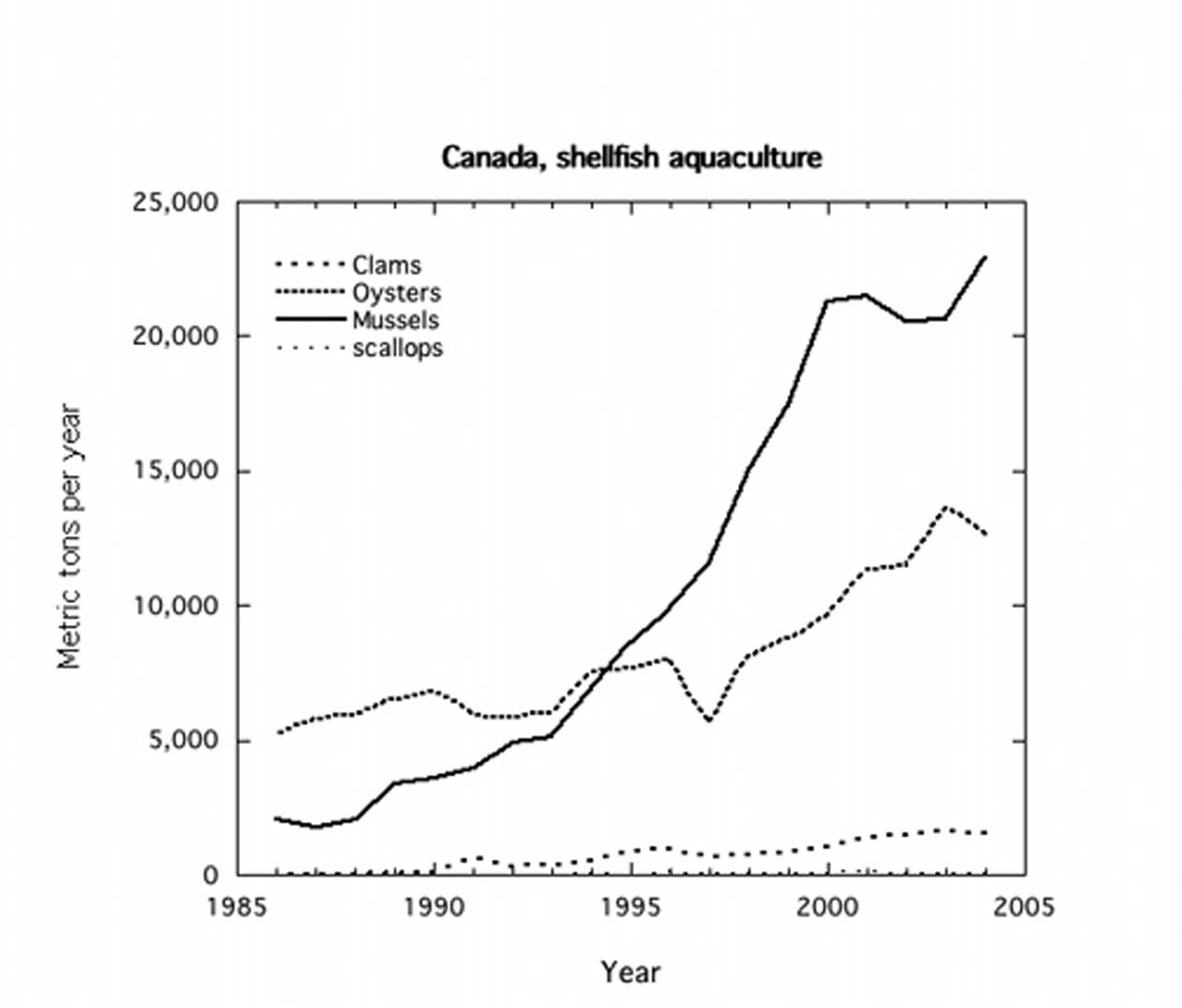mercial landings of wild fisheries in 2004 were 1,071,182 tonnes, while aquaculture production was 145,840 tonnes, or 13.6% of the wild harvest. However, for salmon in Canada the wild fishery landed just over 25% of aquaculture production in 2004. The US is a net importer of seafood primarily from Asia.
2.7.2 European aquaculture
The aquaculture sector in Europe has a very diverse production, processing and marketing structure, ranging from small traditional enterprises, through medium-sized family fish farms, to the large-scale intensive businesses dominated by multinational companies (Fédération Européenne de Salmoniculture, 1990; MacAlister Elliott and Partners Ltd., 1999; Varadi et. al., 2001). Although there are structural differences between aquaculture sectors in different European regions, markets are now the determining factors of success and therefore the major driver in the aquaculture business with consumer demands, international competitiveness, health and environment issues and product quality all driving demand and price (Stirling Aquaculture, 1996ab). The total output from European aquaculture has increased steadily since 1945 (Tacon, 1997). From the 1960s to the present the broad pattern of aquaculture development has been (FAO, 1996, 2000; Tacon and Barg, 1998): • High growth in Northern Europe and medium growth in Western Europe fuelled by the development of salmo-nid mariculture; • Low growth in Southern Europe with a focus on mariculture of sea fish; and |
|
• Decline in CEE due to general post-transition economic decline and changing consumer habits (Staykov, 1994; Szczerbowski, 1996).
Increases in the production of finfish and molluscs have almost always led to value reduction as the price falls. This has become a serious issue for the viability of salmonid farming in Northern and Western Europe, where ex-farm prices have dropped from 3.5 Euro kg-1 in 1997 to 2.4 Euro kg-1 in 2005. In Southern Europe the value of farmed sea fish has remained relatively steady. Overall production increases in European aquaculture have slightly outpaced falls in price, leading to an increase in total value from 3.4 million Euro in 1999 to 3.9 million Euro in 2005. Subsidies from the EU have contributed to the development of the salmonid sector, but withdrawal of state support in CEE may have contributed to the decline in cyprinid production. Other challenges for aquaculture include increasing concern from the public and from governments about the quality of fish produced in intensive systems and about the environmental impacts of fish farming and the competition for resources such as high quality water, high protein feed based on fish meal and labor. Freshwater production has grown since 1945, but remained almost static in the 1980s, largely because output from the CIS countries and Russia declined (FAO, 1996). Increased fish consumption is expected, especially in CEE, where per capita fish consumption still remains far below that of the EU-15 (Tacon, 1997). Overall production from freshwater aquaculture is now increasing, al- |

